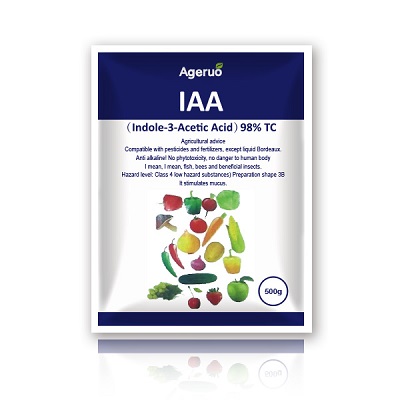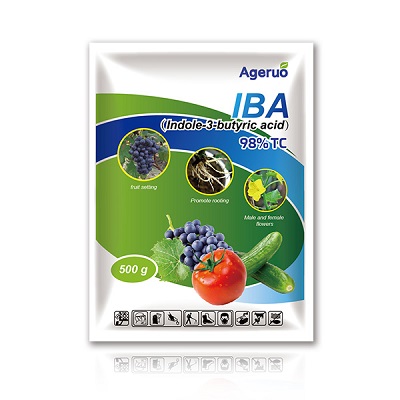The mechanism of action of IAA (Indole-3-Acetic Acid) is to promote cell division, elongation and expansion.
Low concentration and Gibberellic acid and other pesticides synergistically promote the growth and development of plants. High concentration induces the production of endogenous ethylene and promotes the maturation and senescence of plant tissues or organs.
It is the earliest rooting agent used in agriculture and a broad-spectrum multi-purpose plant growth regulator. But it is easily degraded inside and outside the plant.
The basic physiological functions of IBA (Indole-3-Butyric Acid) are similar to IAA (Indole-3-Acetic Acid). After being absorbed by plants, it is not easy to conduct in the body, and often stays in the treatment part, so it is mainly used to promote the rooting of cuttings. Although it is more stable than indole acetic acid, it is easy to decompose when exposed to light.
Single use has rooting effect on a variety of crops, but mixed with other plant growth regulators with rooting effect, the effect is better. For example, IAA or IBA is used to promote fine, sparse and branched roots when cuttings take root; NAA (Naphthylacetic Acid) can induce thick, endoplasmic multi-branched roots, etc., so their combination is often used in production.
Post time: Mar-31-2021






